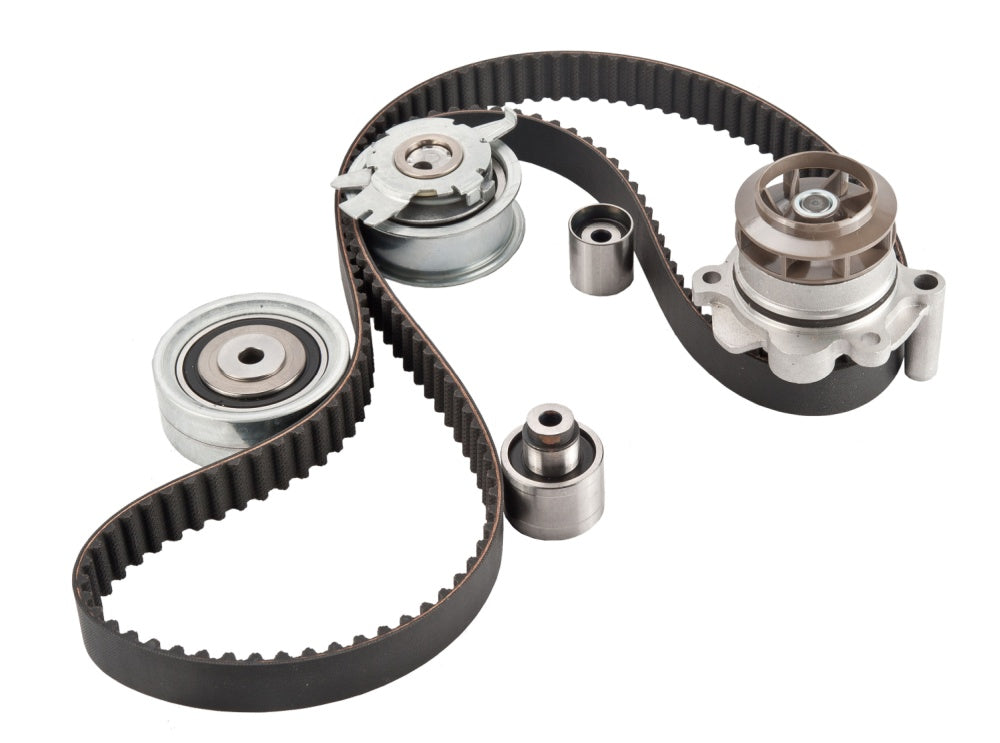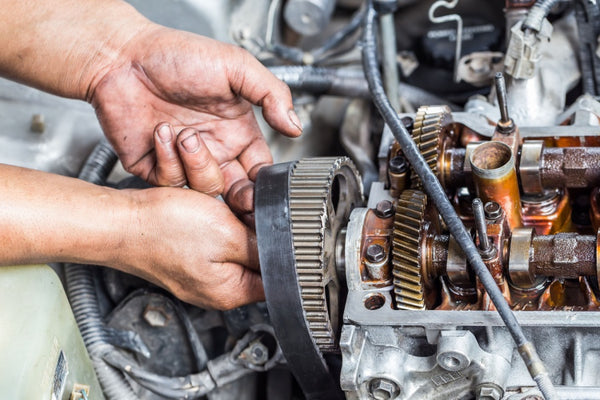Timing Belts vs. Timing Chains: What You Need to Know
To keep the complex moving parts of your car’s engine precisely synchronized for smooth operation, engineers use timing belts or chains to control valve/ignition timing. We’ll compare the inherent design differences of belts versus chains and help determine if your vehicle has this key engine component.
What is Engine Timing?
For an engine to effectively generate power, intake/exhaust valves must open and close at exactly the right time in conjunction with fuel ignition created by the spark plugs. Engine timing manages these events in precise relation to the movement of internal parts like pistons and crankshafts. Faulty timing means rough running, degraded power and expensive repairs.
Timing Component Options
Car manufacturers have a choice between these two timing technologies to keep engine internals properly in step:
Timing Belts – Constructed of high strength reinforced rubber with embedded tensile cords molded into a toothed design that meshes with corresponding sprockets/gears. More compact and operates smoothly.
Timing Chains – Uses tough metal roller chains similar to bicycle design, incorporating interlocking flat steel plates assembled on bushings and rotating over toothed sprockets. More durable but noisy.
Key Differences In Operation
While these engine timing components are not interchangeable, they achieve the same end result of keeping intricately choreographed internal parts spinning together precisely:
- Timing belts operate very quietly using smooth, flexible rubber friction contact with nylon/fiberglass cord reinforcement. Chains are noisier during metal on metal contact.
- Replacement intervals average 60-100k miles for belts versus well over 200k+ miles for chains. Belts can visually show signs of surface cracking over time.
- Belt systems may allow some harmless tooth jumping at very high RPMs where chains maintain more precise positional control.
- Complete timing belt failure is often catastrophic since the engine immediately loses synchronization. A broken chain may only result in an annoying rattle sound before repairs. Most modern vehicles have protective covers to contain damage from a failure.
Verifying Which Technology You Have
Confused if your particular car has a timing belt versus chain? Here are some tips to tell:
- VISUALLY INSPECT UNDER THE HOOD – Look for a timing belt cover often found along the front side of the engine, whereas timing chains operate deeper towards the firewall.
- CHECK YOUR OWNER’S MANUAL MAINTENANCE SCHEDULE – Recommended timing belt replacement intervals around 60-100k miles is the telltale sign a belt is present rather than more durable chains.
- ASK YOUR MECHANIC – Any professional technician can quickly verify if your specific engine uses a rubber timing belt or metal roller chain. This knowledge helps determine routine maintenance needs.
Tip: Browse our auto parts catalog
DIY Timing Component Replacement?
Advanced gear heads with expert mechanical skills may be tempted to conduct timing belt or chain replacement as a DIY project to save money. This involves carefully putting the engine at top dead center, locking camshaft sprockets and closely following intricate installation procedures to guarantee perfect alignment.
However, with so much at stake if mistakes are made, most car owners wisely choose to have professional replacement conducted at a dealer service center or trusted performance shop. The experienced mechanic has all the specialized tools and know-how to properly tension components and accurately set ignition timing for smooth running.
Installation Tips for New Timing Belts/Chains
When installing new timing belts and chains, it's critical to pay attention to proper tension. Belts that are too loose can jump timing while over-tightened chains can lead to premature worn guide wear. Always carefully follow torque procedures for fasteners that secure sprockets. Use alignment markers to confirm exact positional indexing. Double check timing marks after rotating engine manually through several cycles.
Recommendations for Replacement Parts
Whether replacing worn timing belts or chains, always go with OEM factory components or equivalent quality aftermarket parts found at PartsMax.co. Don’t take risks with cheap knockoff components from questionable suppliers that could easily fail and lead to catastrophic engine damage from mistimed valves and pistons.
Keep Your Engine Properly Timed
Whether your particular car relies on the flexible friction contact of fiber reinforced belts or the precise control of high strength roller chains, proper timing is absolutely critical to engine performance, fuel efficiency and longevity. Watch for replacement indicators and conduct component swaps before recommended intervals. Trust the experts at PartsMax.co for perfectly matched OEM engine timing parts with the reliability and precision your ride demands. They keep your engine’s intricate internals flawlessly timed for maximum fun out on the open road!



